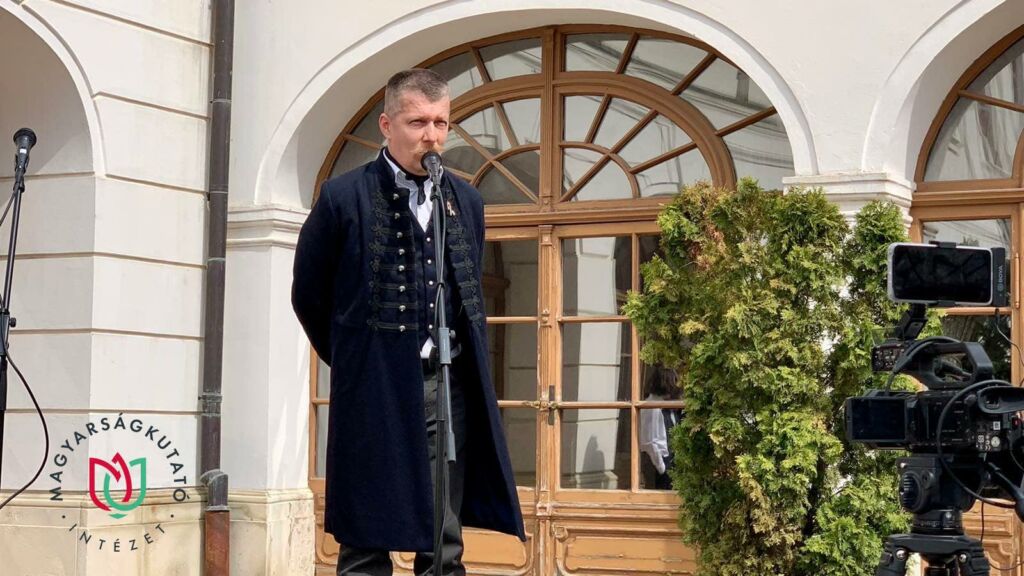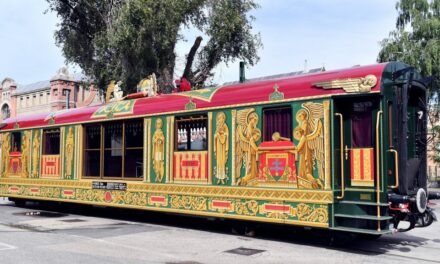The Ragged Guard's invention knew no bounds: the large amount of ammunition and hand grenades was sent as mail in order to save Sopron. On vasarnap.hu, Gábor Tóth talked about the uprising in Western Hungary and the ragtag soldiers with military historian Zoltán Babucs, acting expert of the Hungarian Research Institute. The film's director and experts will talk about the film about them tonight from 21.00 on the M5 program in the program Ez itt a qímál.
The collective name "Rongyosok" means not only the Ragged Guard, which was established in April 1919 in the Kecskemét farm world - under the leadership of reserve flight lieutenant Iván Héjjas - with the aim of national rescue and anti-communism, but also all those who took part in the 1921 uprising in Western Hungary. Several detachments played a role in this, in addition to the Rag Guard. In their ranks are patriotic, anti-Bolshevist officers, non-commissioned officers and soldiers with rich military experience, members of the former Székely Division, peasants from the area of Kecskemét, Kunszentmiklós, Gödöllő, Aszód and Vác, people from Petrozsény in southern Transylvania, university students from Sopron, farmers from Magyaróvár, university students from Pest, refugee academicians from Selmecbány , even Albanian and Bosnian insurgents fought.
Most of them were men in military uniform who had visited the battlefields of the Great War, so no time had to be spent on their training.
In addition to infantrymen and artillerymen, there were hussars, stormtroopers, journeymen, but also those who carried out diversionary activities during the Romanian invasion of Transylvania in 1916, and could now put their skills to good use. They came from almost every social class, including noblemen and warriors with golden spurs. They were also joined by teenagers, for example 12 students from the Kecskemét Higher Trade School, but also a group of 45 students from Győr.
Officially, the Hungarian government could not support the insurgents, but secretly, as a government agent, off-duty General Staff Captain Gyula Gömbös participated in the organization, initiation and support of the uprising.
The Western Hungarian League, the Association of Awakening Hungarians, the Kettőskereszt Blood Society and other irredentist organizations, banned due to Western pressure, began recruiting. The Youth Circle in Sopron and the Economic Academy in Magyaróvár also sent an "insurgent summons" to its members in military uniform.
In the beginning, the insurgents did not have uniforms, so as not to be seen as Hungarian soldiers. The groups wearing civilian taunts and "the most fantastic outfits" tried to give their appearance a military character with the help of one article of clothing. The peculiarity of the motley outfits was that everyone "bought" an article of military clothing and equipment for themselves - e.g. cloak, hat, tent sheet, footwear, bread sack, camp blanket, etc. In the end, however, a kind of insurgent "uniform" was formed, the main characteristic of which was the wide-brimmed hat on the shield-shaped plate with a white double cross in the green field. Over time, the insurgents were literally in tatters, so they enlisted the tailors, shoemakers, and bootmakers in the areas they controlled to fix their clothing.
They didn't set out to save the country with bare hands, as as a result of the "Snájdig Arms Battle" on July 30, 1920, under the leadership of Mihály Francia Kiss, the ragtags thoroughly destroyed the Fürstenfeld weapons depot. As a result, 3,000 8 mm 95 M. Mannlicher rifles, carbines and rifles, German-made 7.92 mm 98 M. Mauser rifles, and 30 8 mm 7 M. and 7/12. M. Schwarlose's machine gun, a large amount of ammunition and hand grenades were hidden in the vicinity of Kecskemét, and when weapons were needed for the defense of Sopron, they were given as mail. Most of them arrived in Western Hungary.
Sometimes invention also helped them. In the second battle in Ágfalv, the insurgents successfully convinced the Austrians that they had artillery: "In the school yard, much to our surprise, the Bosnian platoon leader Olcsán and his two companions roll a barrel of rainwater into the center and shoot into it. The effect is great. The detonation is equivalent to the boom of a good medium-caliber cannon.” As a result of their successful raids, they also looted machine guns, rifles, ammunition, telecommunication stations and equipment items - assault helmets, cartridge cases, cartridge bags.
You can see an interesting discussion about the activities of the Ragged Guard today on M5 at 9:00 p.m. on the M5 channel: This is the question, in connection with the film Guard Fires in the West. A related article can be read here.
Source: vasarnap.hu/Gábor Tóth
Featured image: Hungarian Research Institute












